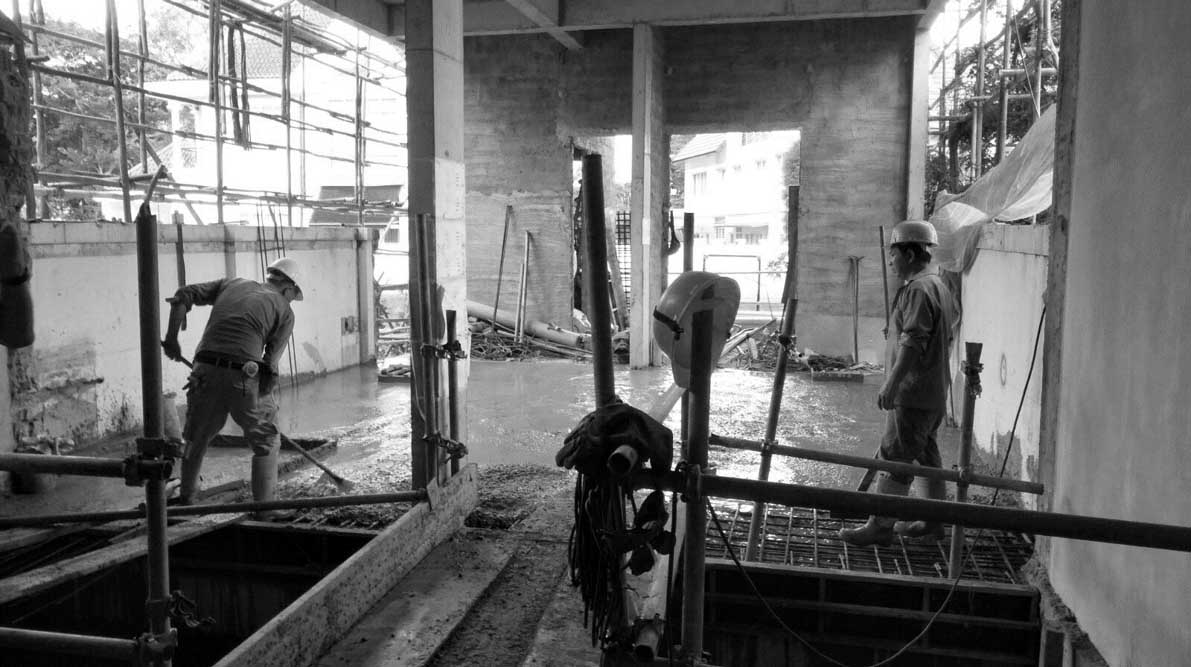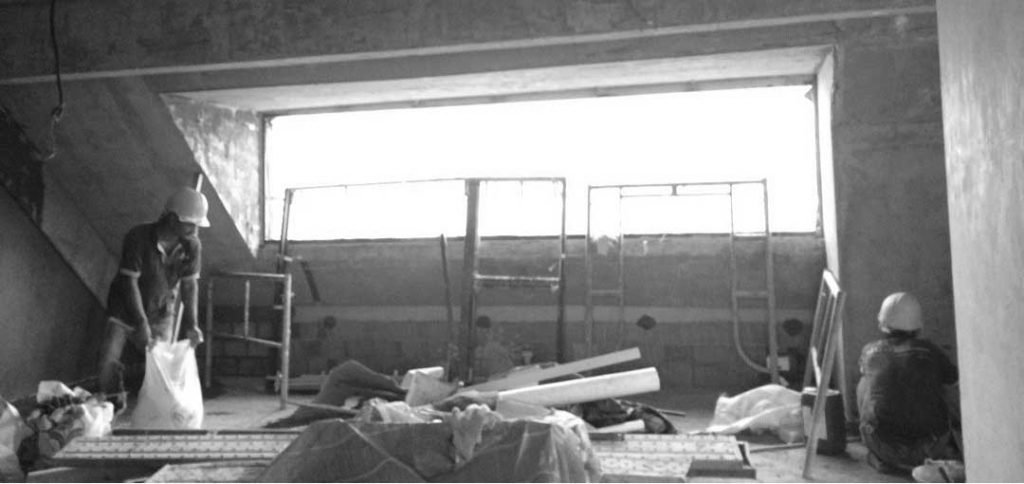The Singapore Architect and the Singapore Builder are both professionals with unique and specialized roles in the completion of construction projects and they often must approach their tasks strategically to reach a common goal. One typically cannot function well without the other. A symbiotic relationship exists. If executed well, an awesome end-product will result, every time.
Architects and builders often work closely together but the nature of what they do is fundamentally different. Architects specialize in the abstract, in conceiving suitable configurations, shapes, and spaces. Builders are concerned with the concrete details of materials and fasteners and with the physical work of construction. The architect is a big-picture person, responsible for envisioning the whole. It is the builder’s and the other tradesmen’s jobs to be concerned with the individual parts.
Who is an architect?
An architect is the one who transplants visions and ideas into blueprints, visualizing a client’s dream and setting the stage for its achievement. An architect focuses on the aesthetics of the structural work, as well as concentrate on the look, feel and functionality. He/she plans everything from the floor layout to the conceptualizing of the façade of the house. Also, the architect must ensure that the blueprints or aesthetics are put as per the correct standards for enhanced safety during the construction of the house.
In short, the architect seeds ideas, germinates them and sees to their fruition. The role is primarily a design role which has to have both imaginative and pragmatic elements. Foresight is a prerequisite as well. Key responsibilities of an architect encompass the following:
Design and Planning
Working with someone to envision your project before construction begins is invaluable. With a well-conceived design determined ahead of time, you can build a more efficient and economical project. As ideas evolve during design, it is easier to incorporate changes (and are far less expensive) than during the construction phase. Laying out your spaces optimally based on your needs and wants is important. Make sure spaces are appropriately sized and that they complement your needs. An ability to create multi-functional spaces where different activities can be performed in the same area is increasingly important to suit the modern lifestyle.
Future Flexibility
Many people are interested in creating age-in-place spaces so that they can enjoy spaces now and as they age. An ability to plan for and account for the changing needs of the users (clearances, mounting heights, etc) is crucial.
Creativity + Problem-Solving
A building project is often a mammoth undertaking. A creative problem solver not only elevates your design from just passable to something really out of this world, he/she can anticipate potential obstacles or challenges the project might face, keeping things a step ahead of the curve.
Aesthetic Style + Character
The design aesthetics of a project is probably the most obvious area in which a project can be made unique and appealing to suit various tastes and preferences. Working with someone who can bring that to the forefront is invaluable.
Building + Construction Know How
Construction of a building is an undertaking that requires knowledge of working with the building, planning, zoning and other government officials. Regulations and standards are often complex documents and are difficult for those outside of the building industry to comprehend. Working with someone able to navigate the regulatory maze is needless to say, very important. This can speed up the approvals process by many months, saving time and money for all concerned.
Materials + Finishes Selection
Keeping abreast of the latest construction materials and technologies means being able to better recommend materials and systems that fit your budget, tastes, are durable and saves you from frequent maintenance and replacement costs. An ability to discern product quality and value is a valuable asset.
Latest Techniques + Building Assemblies
Continual advances in technology portend for new building techniques and systems coming online with increasing frequency and meeting ever greater demands of society today, such as energy-efficiency requirements. These new products and techniques are rendering many traditional building practices obsolete. Working with someone who can take advantage of the best practices and improved techniques of today’s time will be imperative for the 21st Century.
Site Selection + Building Location
An analysis of the site of a building project is important. Undertaking a review of site features, topography, utility access, vehicular access and views helps you find the most ideal location for your structure on the site. Maximizing energy efficiency based on building orientation can further blend a building into the surrounding landscape yet enabling it to stand out from the rest.
Energy Efficiency
An ability to reduce utility bills, especially for a large house, will pay dividends for years to come. Constructing a building that responds to the site using passive heating and cooling strategies is smart. Successfully harnessing nature’s (free) energy resources also allows you to reduce your carbon footprint. In addition, an architect can suggest ways of conserving energy, water, and other resources altogether.
In Singapore, practising architects need to secure a registration with the Board of Architects (BOA).

Who is a builder?
Most home builders are essentially general contractors specializing in construction. A builder is a professional who can execute home construction from scratch to finish, following the blueprints provided by the architect. A builder concentrates on making sure the structure will be safe and habitable. is able to endure everyday and extreme conditions. The builder will analyze and evaluate the blueprints of the design from the architect and find ways to build it in the most efficient and practical way. This often utilises other professional’s advice that includes the structural and mechanical and electrical engineer. They will look at methods and techniques to turn the architect’s vision into reality.
The general responsibilities of a builder entail the planning and execution of all pertinent activities relating to the construction of a dwelling or building. The builder carries out his/her duties by supervising employees, planning how the project will be carried out and completing the project in a manner which abides by all laws, rules and regulations.
The builder would thus be responsible for providing all the material, labour, equipment (such as engineering vehicles and tools), services and obtaining the licences and permits necessary for the construction of the project. They would also often hire specialized subcontractors to perform all or portions of the construction work. When using subcontractors, the main contractor is responsible for the quality of all work performed by any and all of the hires.
Budget issues are another item which relate to responsibilities of a builder. The builder must establish a budget for the construction project and adhere to that budget as closely as possible. This will allow the builder to obtain supplies, hire workers and finish the construction in a cost-efficient manner. Instituting and following budgets is paramount which builders should be concerned with as they help ensure that the project does not incur cost overruns.
Throughout the construction process, the builder is also responsible for reviewing the progress and implementing any changes along the way. The builder needs to ensure that the building’s construction is going in accordance to plan. If need be, timely changes need to be made.
Last but not least, ensuring safety on the job site at all times is paramount.
In Singapore, licensed builders have to be registered with the Building and Construction Authority (BCA).
In conclusion, the architect and the builder play very distinct roles in a building project. It is crucial to engage both the right architect and builder for the project. It is helpful to note that the Singapore Architect will be able to recommend the appropriate builder for the respective building project-based on its design, typology and context.


